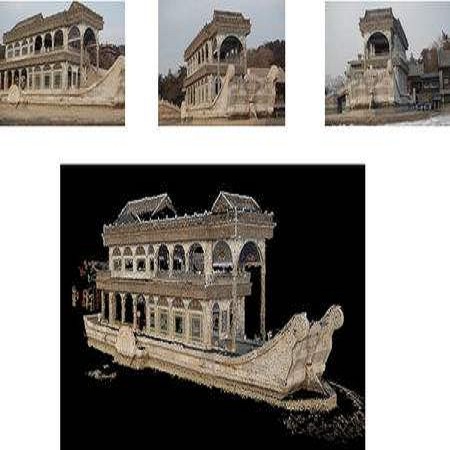Reconstructing 3D objects from 2D images is both challenging for our brains and machine learning algorithms. To support this spatial reasoning task, contextual information about the overall shape of an object is critical. However, such information is not captured by established loss terms (e.g. Dice loss). We propose to complement geometrical shape information by including multi-scale topological features, such as connected components, cycles, and voids, in the reconstruction loss. Our method uses cubical complexes to calculate topological features of 3D volume data and employs an optimal transport distance to guide the reconstruction process. This topology-aware loss is fully differentiable, computationally efficient, and can be added to any neural network. We demonstrate the utility of our loss by incorporating it into SHAPR, a model for predicting the 3D cell shape of individual cells based on 2D microscopy images. Using a hybrid loss that leverages both geometrical and topological information of single objects to assess their shape, we find that topological information substantially improves the quality of reconstructions, thus highlighting its ability to extract more relevant features from image datasets.
翻译:从 2D 图像中重建 3D 对象对我们大脑和机器学习算法都具有挑战性。 为了支持这一空间推理任务, 有关一个对象整体形状的背景信息至关重要 。 但是, 这些信息没有被固定的损失术语( 如 Dice 损失) 所捕捉 。 我们提议在重建损失中添加多尺度的地形特征( 如连接组件、 循环和空隙) 来补充几何形状信息 。 我们的方法使用立方复合体来计算 3D 体体积数据的地形特征, 并使用最佳的传输距离来指导重建进程。 这种地表觉损失完全可以区分、 计算有效, 并且可以添加到任何神经网络中。 我们通过将它纳入 SHARP 来展示我们损失的效用, 这是基于 2D 显微镜图像预测个体细胞3D 细胞形状的模式 。 我们使用混合损失来利用单个对象的几何和表层信息来评估其形状, 我们发现 地形信息大大改进了重建进程的质量, 从而突出其从图像数据集中提取更多相关特性的能力 。




